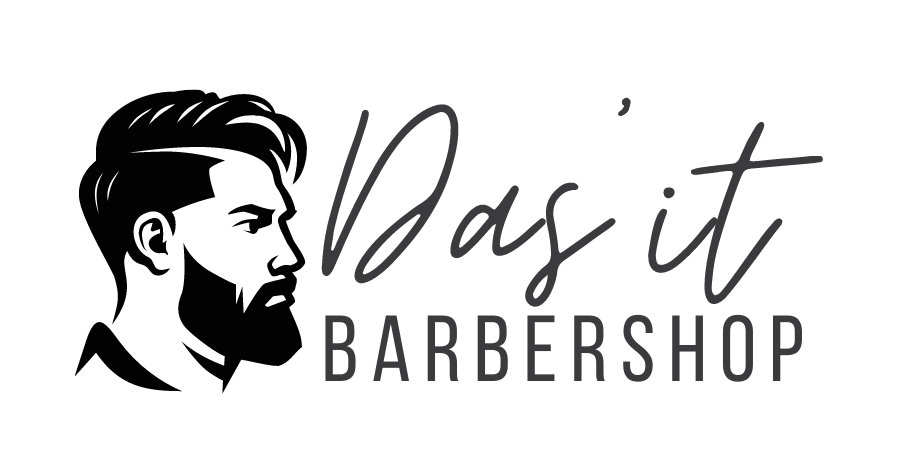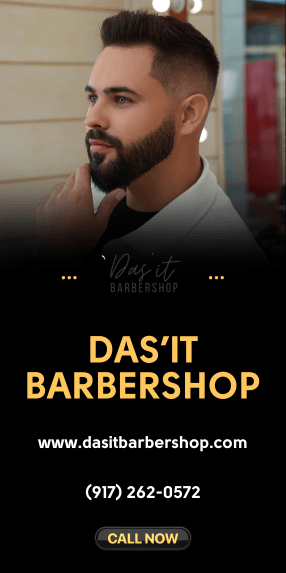Trimming your beard at home can save time and money, but doing it wrong can ruin weeks of growth. With the right technique and tools, you can maintain a sharp, well-groomed beard between barber visits. Here’s how to get it right.
1. Start with a Clean, Dry Beard
Before you begin trimming, it’s crucial to prepare your beard properly to ensure a smooth and even result. Start by washing your beard thoroughly with a gentle, sulfate-free cleanser designed specifically for facial hair. Regular shampoos can be too harsh and strip the natural moisture from your beard, leaving it brittle and unmanageable. A beard cleanser softens the hair and clears away oils, dirt, and any buildup that may have accumulated. This step is essential as it helps you work on a clean canvas, allowing your trimmer or scissors to glide more effectively through the beard.
After washing, pat your beard dry with a soft towel, being careful not to rub too vigorously, which can cause frizziness and breakage. Avoid trimming your beard while it’s still wet or damp. Wet hair expands and appears longer, meaning you might accidentally trim too much, leading to uneven length once your beard dries and returns to its natural state. Take your time to ensure your beard is fully dry—air drying or using a blow dryer on a low, cool setting can help speed up this process without damaging the hair. Patience at this stage will set you up for a more precise and polished trim.
2. Invest in Quality Tools
The tools you choose for trimming your beard can significantly impact the results. If you want to achieve a professional finish that even rivals a beard trim in New York barber shop, investing in high-quality tools is non-negotiable. Start with a professional-grade trimmer that offers multiple guards for different lengths. A trimmer with sharp, stainless steel blades will ensure a smooth and consistent cut, reducing the risk of pulling hairs or creating patchy spots. Adjustable settings allow you to work on different areas of your beard with precision, such as fading the sides or detailing the edges.
Sharp scissors crafted specifically for hair trimming are another essential tool. These scissors are smaller and have finely-honed blades, making them perfect for snipping stray hairs or fine-tuning your beard’s shape. Avoid using household scissors as they are not designed for detailed grooming and can lead to uneven cuts or damage to the hair shaft.
Don’t underestimate the power of a good comb as well. A fine-tooth comb helps evenly distribute your beard hair, making it easier to identify longer sections and trim accurately. It’s particularly useful when blending and shaping your beard, allowing you to target specific areas without affecting the overall look. High-quality tools may require an initial investment, but they save you from frustration, uneven results, and even potential damage to your beard in the long run. Whether you’re a novice or an experienced groomer, the right tools make all the difference.
3. Comb Through to Remove Tangles
Before you start trimming your beard, it’s essential to take the time to properly detangle and smooth it out. This ensures that your trimming process will be both precise and effective. Always use a high-quality comb designed for beard care — one with teeth wide enough to glide effortlessly through thick or curly facial hair. Begin by gently combing downward in the natural direction of hair growth. This motion not only helps reveal the true length of your beard but also allows you to spot any uneven patches much more easily.
Detangling prevents snags, which can lead to an uneven trim or accidental removal of more hair than you intended. If your beard is particularly thick, coarse, or knotted, consider applying a small amount of beard oil beforehand. This will soften the hair, making it less prone to breakage or splitting during the detangling process. Pay close attention to any stubborn tangles, carefully working through them without tugging or pulling harshly. An untangled beard creates a smooth canvas for trimming and reduces the chances of errors, ensuring a more professional, polished result.
4. Choose Your Beard Style Before Cutting
Trimming a beard without a clear style in mind can quickly lead to frustration or over-trimming, resulting in a look that doesn’t match your personal preferences. Before picking up the trimmer, pause and decide on the beard style that best suits your face shape, lifestyle, and overall aesthetic. Popular beard styles include the short boxed beard, which sits closer to the face and delivers a clean, sharp appearance; the tapered beard, offering a sleek and modern look by blending longer hairs at the chin into shorter lengths toward the cheeks; or the full natural beard, which embraces thickness and rugged charm while still requiring maintenance for neatness and symmetry.
Visualizing your desired style in advance ensures every cut and trim is intentional. Take time to research inspirational photos or guides for your chosen beard look. You might even consider using a beard template or consulting professional style tips to help define the lines and edges of your design. Remember, it’s easier to trim off more hair later if needed, but impossible to undo an overly aggressive cut. Start with small, careful adjustments and maintain gradual progress as you shape toward your end goal. Pre-planning your style not only prevents accidental missteps but also ensures that your grooming session leaves you feeling confident and proud of your refined appearance.
5. Define Your Neckline and Cheek Lines
When shaping your beard, paying attention to your neckline and cheek lines can make all the difference in achieving a well-groomed and polished appearance. Start with the neckline, which serves as the foundation of your beard style. To find the ideal neckline, use your Adam’s apple as a natural guide. Imagine a curved line extending from one ear to the other, passing about one to two finger widths above your Adam’s apple. This line should form the lowest boundary of your beard. If you’re unsure, tilt your head slightly upward and visualize a soft U-shape curve that dips gently below your jawline. Avoid trimming too high, as it can create an unnatural look that disrupts the seamless transition between your beard and neck.
When it comes to the cheek lines, they frame the upper boundary of your beard and significantly influence the overall symmetry and balance of your style. For a more natural look, follow the natural curve or arch where your facial hair meets your skin. If you’re after a sharper appearance, you may want to define a slight curve or a straight, clean line that enhances the structure of your face. Take your time here—use a good-quality trimmer or razor and go slowly to achieve even sides. For extra precision, you can lightly outline the desired shape with a washable pencil or trimming guide before committing with the razor. Regular cleanups of the neckline and cheek lines are essential to maintaining a polished appearance, as overgrown edges can quickly diminish the impact of an otherwise well-kept beard.
6. Use the Right Hair Products for Styling
The hair products you choose for beard care have a profound impact on both the look and health of your facial hair. A lightweight beard oil or balm is a must-have, as it offers numerous benefits that enhance your grooming routine. Beard oil is specifically designed to soften the hair, making it easier to trim and shape without causing irritation to your skin. It also hydrates both your beard and the skin beneath, helping to prevent dryness, flakiness, and the dreaded “beard itch” that often comes with growing facial hair.
For styling purposes, a high-quality beard balm takes things a step further by providing a subtle hold that keeps stray hairs in check. Balms typically contain natural waxes and butters that not only shape your beard but also reduce static and flyaways, creating a cleaner, smoother finish. To use these products effectively, start by applying a few drops of beard oil or a pea-sized amount of balm into your palms. Rub your hands together to evenly distribute the product, then massage it into your beard, reaching down to the roots and covering every strand. Finish by combing through your beard with a wide-tooth comb or beard brush to set your style, align the hairs, and evenly spread the product for a well-groomed, polished result. Regular use of beard oil or balm will protect your beard against environmental damage, keep it looking its best, and ensure your styling efforts are long-lasting.
7. Trim in Stages
Achieving the perfect trim is a process that requires patience, precision, and attention to detail. Start by selecting a longer guard on your trimmer, as this provides a safe starting point and ensures you won’t accidentally cut your beard too short. This initial step is crucial for preserving more length and allowing you to adjust the trimming gradually. Begin trimming in small, controlled movements, focusing on one section of your beard at a time. Pay close attention to the overall shape and flow, taking care to follow the natural contours of your face. After an initial pass with the longer guard, assess your progress in a mirror. Check for any uneven areas or stray hairs, and carefully decide whether to proceed with the same guard length or switch to a shorter one for further refinement.
Consistency is key, so work methodically. Start trimming on one side of your face and gradually move to the other, ensuring symmetry and balance as you go. It’s essential to step back frequently and inspect your beard from different angles in the mirror. This helps you keep track of the overall shape and avoid common mistakes like trimming one side shorter than the other. Using the mirror as your guide, continuously compare both sides of your beard and make adjustments to maintain evenness. Remember, it’s always better to trim less than too much. You can trim a little more if needed, but you can’t undo an overly aggressive cut.
Don’t rush this process—trimming in stages allows you to maintain control throughout and leaves room for corrective actions if necessary. Precision and patience will result in a well-groomed, tailored beard that enhances your facial features and expresses your personal style.
8. Visit a Barbershop for Inspiration
If you’re unsure about shaping your beard or want to refresh your approach, visiting a barbershop in New York can be an invaluable source of inspiration. Professional barbers possess expertise in beard styling and grooming, and observing their techniques can teach you a lot about proper trimming and maintenance. Choose a highly regarded barbershop known for its skilled barbers and quality service. Once there, take note of their methods, such as how they shape beards to complement different face shapes or the tools they use for precision work.
Don’t hesitate to ask questions or discuss your specific styling goals with the barber. They’re often happy to share tips or recommend products tailored to your beard type and texture. Watching a professional work on your beard can also give you a better understanding of how to handle tools like scissors, clippers, and combs for more refined results.
Additionally, barbershops in New York are often hubs for the latest grooming trends and styles. You might discover ideas for a new beard shape, length, or overall aesthetic that suits your personality and appearance. Taking mental notes—or even photos of the results if permitted—ensures you have a reference for when you attempt your next trim at home. Incorporating insights from experienced professionals into your routine helps elevate your grooming game, resulting in a beard that looks polished and uniquely you.
9. Blend with Scissors for a Natural Look
After using clippers to define the general shape of your beard, it’s essential to refine the details with a pair of high-quality barber scissors. Clippers work well for bulk trimming, but they can sometimes leave your beard looking too uniform or unnatural in certain areas. Scissors allow for greater precision and give you control over blending stray or uneven hairs seamlessly into the rest of your beard or mustache.
Start by focusing on your mustache or the edges of your beard where larger clippers might struggle to provide finesse. Comb through your beard to lift and align the hairs. Identify any that stick out or clash with the surrounding area. Snip lightly with the scissors, using small, controlled cuts to gradually bring those stray hairs in line. When trimming around the mustache, particularly at the edges of your lips, keep the scissors parallel to your skin to ensure evenness and prevent cutting off too much length.
This technique prevents over-thinning, as scissors allow you to remove only what’s necessary without disrupting the overall balance of your beard. Pay close attention to transition zones, such as where your beard meets your sideburns or neck area. Proper blending in these regions creates a natural, harmonious look, so take extra care while trimming here. Patience is key—take your time, snip a little at a time, and step back to examine your work before continuing. Scissor work ensures your beard boasts a polished, professional finish that looks effortlessly well-groomed.
10. Moisturize and Maintain Daily
Once your beard is trimmed to your liking, the next vital step is to moisturize and maintain it daily to keep it looking its best. Healthy hair requires proper care, and this is especially true for your beard and the skin beneath it. Start by applying a few drops of beard oil directly onto your fingers or palms. Rub your hands together to evenly distribute the oil, then massage it gently into your beard, starting from the roots and working outward to the tips. Beard oil hydrates the skin, prevents itching, and softens the hairs, making them more manageable while adding a healthy shine to your beard.
Brushing your beard daily is another critical part of maintenance. Use a beard brush or comb to distribute natural oils evenly across your hair. Brushing also helps train your beard to grow in a uniform direction, preventing unruly or patchy areas between trims. Additionally, brushing loosens dirt and dead skin cells that can accumulate underneath your beard, maintaining cleanliness and reducing the risk of irritation.
For optimal results, incorporate a beard balm or leave-in conditioner into your routine, particularly if you have a thicker or longer beard. These products act as styling agents, providing hold and shape while delivering extra hydration. Consistency is key for beard maintenance, so make moisturizing and grooming a daily ritual for long-term results.
Conclusion
A well-groomed beard is more than a style statement—it is a testament to confidence and personal care. Following these steps allows you to trim and maintain your beard effectively from the comfort of home. While mastering the techniques may take a bit of practice, you’ll soon find that trimming your beard can be a quick and effortless addition to your grooming routine.
Remember, for substantial style changes, achieving specific cuts, or tackling complex designs, consulting a professional barber is always a wise choice. Their expertise can be invaluable, helping you achieve a look that complements your features perfectly. Whether at home or under the skilled hands of a barber, caring for your beard ensures it remains a standout aspect of your appearance.


